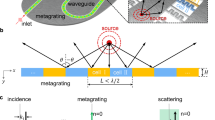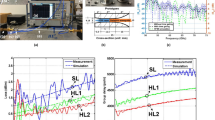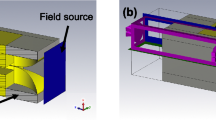Abstract
A SLOW wave structure suitable for an electron linear accelerator or a high-power travelling-wave tube can be obtained by loading a metal wave-guide with a dielectric, either in the form of a coaxial tube or a series of disks.
This is a preview of subscription content, access via your institution
Access options
Subscribe to this journal
Receive 51 print issues and online access
$199.00 per year
only $3.90 per issue
Buy this article
- Purchase on SpringerLink
- Instant access to full article PDF
Prices may be subject to local taxes which are calculated during checkout
Similar content being viewed by others
References
Shersby-Harvie, R. B., Mullett, L. B., Walkinshaw, W., Bell, J. S., and Loach, B. G., Proc. Inst. Elec. Eng., B, 104, 273 (1957).
Walker, G. B., and West, N. D., Proc. Inst. Elect. Eng., C, 104, 381, No. 6 (1957).
Author information
Authors and Affiliations
Rights and permissions
About this article
Cite this article
WALKER, G., LEWIS, E. Vacuum Breakdown in Dielectric-loaded Wave-guides. Nature 181, 38–39 (1958). https://doi.org/10.1038/181038b0
Issue date:
DOI: https://doi.org/10.1038/181038b0
This article is cited by
-
The multipactor effect in a linear electron accelerator
Il Nuovo Cimento (1958)



